Talks On Psychoanalysis
Art
Episodes
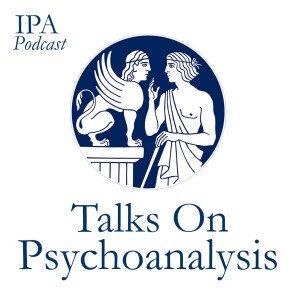
Tuesday Jun 25, 2024
Tuesday Jun 25, 2024
What is it that is so captivating about travel? In Freud’s travel letters chronicling his experiences over many decades in different countries, there are the seeds of the advance of non-clinical experiences of psychoanalysis. Travel takes us to another place with unfamiliar surroundings so that we might see anew that which we may otherwise take for granted. Awe and beauty are often experiences we have while abroad. And these are described by Freud over and over again in these captivating letters.
In this podcast episode, Dr. Patricia O’Donnell discusses Freud’s travel letters and his musings on the pleasures of travel, art, and architecture, as experiences that inspire awe and transcendence. She links these experiences to the unconscious fantasizing that stems from curiosity, rooted in infantile sexuality and that gives rise to the desire to know and triggers of experiences of passion.
Dr. Patricia O’Donnell is a psychiatrist, a full member and training analyst of the Argentine Psychoanalytic Association and a member of the International Psychoanalytic Association. She is also an Associate Professor at the Department of Mental Health at the Hospital de Clinicas Jose de San Martin. She has presented papers at national and international conferences and delivered workshops and lectures on psychoanalytic art research. She has written numerous articles and co-authored books on topics ranging from psychoanalysis and creativity, art and literature.
A subtitled version of this podcast is available on our YouTube channel:https://youtube.com/playlist?list=PLhxiwE76e0QaOquX3GujdwNLFsgxUQNXz&si=yf381EDu3pess6Yz
You can download a copy of the paper here: https://docs.google.com/document/d/1-dthE_sMLxYjtDl4uWWTuEdYD4THtjSN/edit?usp=share_link&ouid=100400904585889441765&rtpof=true&sd=true
This Podcast Series, published by the International Psychoanalytical Association, is part of the activities of the IPA Communication Committee and is produced by the IPA Podcast Editorial Team. Co-Editors: Gaetano Pellegrini and Nicolle Zapien. Editing and Post-Production: Massimiliano Guerrieri.
To stay informed about the latest podcast releases, please sign up today.
This episode has also been published in Spanish.
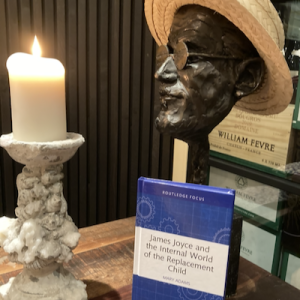
Monday Nov 07, 2022
Monday Nov 07, 2022
In this episode, Mary Adams delve into issues related to the trauma of being a replacement child. She illustrates this with the example of James Joyce, as "he seemed to overcome the debilitating effects of this early trauma and survivor guilt by using his writing".
Mary Adams is a psychoanalyst with the British Psychoanalytic Association, having completed her training in 1996. She was a training analyst with the Association of Child Psychotherapists, has a particular interest in the work of Donald Meltzer and has written several papers using his ideas. She is a past editor of the Journal of the British Association of Psychotherapy. Her book on James Joyce as a replacement child was published by Routledge in 2022.
Link to the paper https://docs.google.com/document/d/1-hL8XbcupQQXAwbwh4ow4hQkBwccIyTo/edit?usp=share_link&ouid=112457875385152358388&rtpof=true&sd=true
Further reading on the Replacement Child:
Anisfeld, L., & Richards, A. D. (2000). The replacement child: Variations on a theme in history and psychoanalysis. Psychoanalytic Study of the Child, 55: 301–318.
Capps, D. (2012). The Replacement Child: Solomonic Justice and the Sublimation of Sibling Envy American Imago, 69(3): 385-400
Pollock, G. H. (1972). Bertha Pappenheim's Pathological Mourning: Possible Effects of Childhood Sibling Loss. J. Amer. Psychoanal. Assn., 20:476-493
Pollock, G. H. (1978). On Siblings, Childhood Sibling Loss, and Creativity. Annual of Psychoanalysis 6:443-481
Reid, M. (1992). ‘Joshua — Life after death. The replacement child’, Journal of Child Psychotherapy, Vol. 18, 2. Pp. 109-138.
Sabbadini, A. (1988). The Replacement Child. Contemporary Psychoanalysis. 24: 528-547.
Schellinski , K. (2019). Individuation for Adult Replacement Children: Ways of Coming into Being. Routledge
Schwab, G. (2009). Replacement children: The transgenerational transmission of traumatic loss. American Imago 66 (3), 277-310.
Silver, D. (1983). The Dark Lady: Sibling loss and mourning in the Shakespearean sonnets. Psychoanalytic Inquiry, 3: (3): 513–527.
Storey, D. (2021). A Stinging Delight. David Story: A Memoir. Faber & Faber.
Whitebook, J. (2017). Freud. An Intellectual Biography. Cambridge UP
Wilson, E. (1988). Stendhal as a Replacement Child: The Theme of the Dead Child in Stendhal's Writings. Psychoanalytic Inquiry, 8:108-133
This Podcast Series, published by the International Psychoanalytical Association, is part of the activities of the IPA Communication Committee and is produced by the IPA Podcast Editorial Team. Head of the Podcast Editorial Team is Gaetano Pellegrini. Editing and Post-Production: Massimiliano Guerrieri.
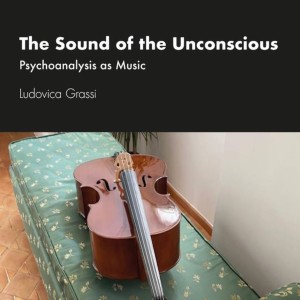
Monday May 16, 2022
Monday May 16, 2022
A few musical passages serve as examples of how music is a basic component of psychic life and unconscious functioning since the earliest sensorial experiences in utero. Both music and the psyche work through similar mechanisms such as repetition, imitation, variation (transformation), intimacy and the work of mourning, of the negative and of nostalgia. Silence and absence, as well as time and temporality, are key elements both in music and in symbolization and subjectivation processes.
Viewing music as a primal and inherent characteristic of psychic structure and functioning allows both a better understanding of somato-psychic development and a musically informed psychoanalytic listening.
Ludovica Grassi is a child neuro-psychiatrist, a full member of the Italian Society of Psychoanalysis, a qualified expert in child and adolescent psychoanalysis, and a psychoanalyst of couples and families. She is currently Treasurer of the Italian Psychoanalytic Society. Her main scholarly interests are infant psychoanalysis, ethno-psychoanalysis, and the role of music in psychic development. She has written on these topics as well as on individual, couple and family psychoanalysis. Her book The Sound of the Unconscious: Psychoanalysis as Music was published by IPA in June 2021.
Link to the paper https://docs.google.com/document/d/1mlfvAq3ejz6VsMGOxaWj1KICinvJIsB_/edit?usp=sharing&ouid=112457875385152358388&rtpof=true&sd=true
This episode is available also in Italian
CREDITS
This podcast series, published by the International Psychoanalytical Association, is part of the activities of the IPA Communication Committee and is produced by the IPA Podcast Editorial Team. Head of the Podcast Editorial Team is Gaetano Pellegrini.
Editing and Post-Production: Massimiliano Guerrieri
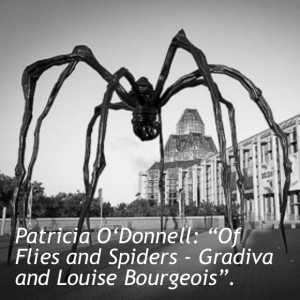
Tuesday Oct 19, 2021
Tuesday Oct 19, 2021
In this episode we come back to deal with Psychoanalysis and Art, through the work of Louise Bourgeois and a small novel very dear to psychoanalysis: "The Gradiva (a Pompeian fantasy)”, written by W. Jensen in 1903.
Patricia O'Donnell presents her paper titled: “Of flies and spiders - Gradiva and Louise Bourgeois" and reports that a particular comment inside the book plus the added role of flies with their multiple meanings in the novel were the triggers for thinking about the French artist.
"Maman", for instance, the gigantic sculpture of a spider in steel and marble, is the paradigm of a theme repeatedly evoked in the writings and works of the artist, who gave these attractive and fearsome creatures a variety of interpretations.
This presentation, which explores and interweaves some biographical information, such as her mourning, the discovery of the difference between the sexes, her writings, her sculpture "Arch of Hysteria”, is an attempt to give us a glimpse into an artistic universe, which expands like a spider's web.
The research into how she constructed the phantasmagoria around the spider constituted a psychoanalytical aesthetic experience with a body of work that invokes a past that travels through time in the face of an unknown future.
Perhaps the spider as an apotropaic and talismanic figure is a defence against the fantasies of death and vulnerability that are so poignant in today's world.
Patricia O'Donnell
Psychiatrist and Psychoanalyst. Full Member and Training Analyst of the Argentine Psychoanalytic Association (APA). Member of the International Psychoanalytic Association. Coordinator of the APA Culture Commission (2017 - 2020).
Associate Professor at the Department of Mental Health at the Hospital de Clínicas José de San Martín where she created and directed the Free Expression Workshop (2016 - 2020). She has begun psychoanalytic research into naïve art.
She started her training in Psychoanalysis and Art with Dr. María Cristina Melgar, who together with Dr. Eugenio López de Gomara, were the pioneers, in 1960, of research into psychotic art in Argentina.
She gave lectures and training sessions to the guides for the exhibition: “Louise Bourgeois. The return of the repressed” at the Department of Education in the Proa Foundation (2011).
She has presented papers at national and international conferences; and publications, workshops and lectures on psychoanalytic art research in different academic fields.
She was shortlisted as a finalist for the Lucian Freud Award, 2014 and is Secretary of the Redes Solidarias Foundation.
She is the co-author of the books:
“The New. Lucian Freud. A psychoanalytical reflection on the enigma of the body and the world".
“Psychoanalysis and Art. From the psychoanalytic method to the encounter with the enigmatic in the visual arts”.
“Topica. Literature and Cinema. Encounters with Psychoanalysis: Louise Bourgeois and the Arch of Hysteria”.
“Women's Forum: Lee Miller”.
Link to the paper https://docs.google.com/document/d/1GOyFfPvc9VEchdeuEcjSBbWWQu-tJuGP/edit?usp=sharing&ouid=112457875385152358388&rtpof=true&sd=true
This episode is available also in Spanish
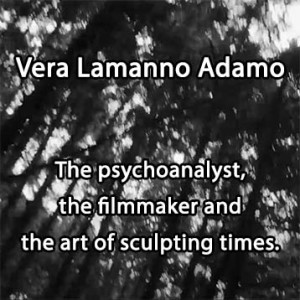
Tuesday Oct 05, 2021
Tuesday Oct 05, 2021
How deep and historically grounded is the intertwining of cinema and psychoanalysis? In this episode, we'll listen to Vera Lamanno Adamo on the crafts of filmmaking and psychoanalysis as the art of sculpting time. She weaves correlations between the construction of a film and the analytic process, and draws a parallel between the history of cinema and the history of psychoanalysis.
This episode refers to an article published in Calibán, Latin American Journal of Psychoanalysis, vl.18, n.2, 2020.
Vera Lamanno Adamo is a training and supervising analyst of the Brazilian Psychoanalytic Societies of São Paulo and Campinas. She has published seven books. Her latest are “Work of the Negative”, “Living on the border: psychoanalysis and art”, “In Corners of Life Death Charms” (in Portuguese), and “Teresa Margarida: the audacity of a woman in the 18th century” (in Portuguese).
In 2012, she received the Psychoanalysis and Freedom award from the Psychoanalytic Federation of Latin America for her contribution to the theoretical and clinical development of psychoanalysis, and in 2013 she received the Revista Brasileira de Psicanálise award.
This episode is available also in Portuguese
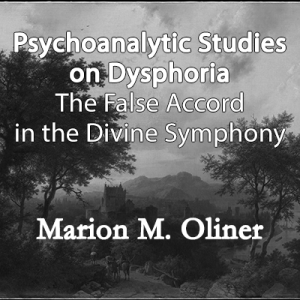
Thursday Sep 23, 2021
Thursday Sep 23, 2021
What is the role of external reality in the formation of traumatic experiences? And how much does this still determine the overcoming of the profound dysphoria that affects certain individuals?
With a highly personal and original view on the functioning of the mind from a psychoanalytic perspective, Marion Oliner accompanies us in this episode through a reflection on the impact of catastrophic events on the lives of individuals and th eir descendants.
Through her voice we will encounter Diderot, Proust and Baudelaire, Grubrich-Simitis and Winnicott; the tragedy of Nazism and the memorable beauty of the vineyards along the Rhine.
Marion M. Oliner has been active in her private practice, teaching, supervising, as a speaker, and as a member of many committees, as well as in the governance of the New York Freudian Society. She is a member of the International Psychoanalytic Association and on the faculty of the New York Freudian Society, the National Psychological Association for Psychoanalysis, and the Metropolitan Institute for Psychoanalytic Psychotherapy.
This episode is inspired by the book published in 2018 by Routledge, titled: "Psychoanalytic Studies on Dysphoria: The False Accord in the Divine Symphony".
link to the paper https://drive.google.com/file/d/1jUQ7U0ZAVNUS5TsWjxkCfv1UqDuJWG36/view?usp=sharing
Sunset on the Rhine, 1853. Barend Cornelis Koekkoek. Courtesy Met Museum, New York.
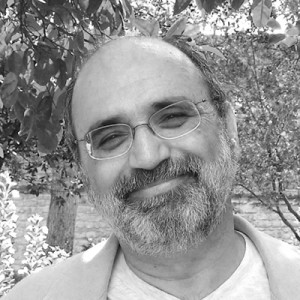
Wednesday Apr 07, 2021
Wednesday Apr 07, 2021
Freud and Winnicott have expressed the opinion that if their psychoanalytic ideas are correct, then poets and writers will have thought of them first. Dominique Scarfone, who has developed the concept of “actual time” on metapsychological grounds, concurs with their opinion by showing that variants of “actual time” can be found in the works of the American poet W. S. Merwin, the British writer Virginia Woolf, and the German philosopher Walter Benjamin. Their poetry, literary prose, and philosophy, respectively, are shown to resonate with the time dimension of the psychoanalytic process.
Dominique Scarfone, M.D., is a training and supervising analyst in the Canadian Psychoanalytic Society & Institute (Montreal French Branches) in the process of retiring from his practice of more than 40 years. A former full professor at the Université de Montréal, he was for many years an Associate Editor of the International Journal of Psychoanalysis. He is presently chairing the Executive committee of the International Journal’s College.
The author of numerous journal articles and book chapters, he published a number books, among which Laplanche: An introduction and The Unpast. The Actual Unconscious, both published in 2015 in New York by UIT-The Unconscious in Translation. He co-edited with Howard B. Levine and Gail Reed. Unrepresented States and the Construction of Meaning (Karnac, 2013). A new book is in preparation : The Reality of the Message. Seduction, trauma and transference. (provisional title) to be published by UIT.
Link to the text https://drive.google.com/file/d/1rT7NYmsJ78Lru4-I4lR1_SOyzevC9SGr/view?usp=sharing

Saturday Mar 13, 2021
Saturday Mar 13, 2021
Michael Parsons is a Training Analyst of the British Psychoanalytical Society and a member of the French Psychoanalytic Association. After a degree in classical literature, ancient history and philosophy, he became a doctor and specialised in psychiatry. He trained as an analyst at the Institute of Psychoanalysis in London, and worked for thirty years in full-time private analytic practice. He has a particular interest in connections between psychoanalysis and other fields such as art, literature and religion.
He is the author of two books: The Dove that Returns, The Dove that Vanishes: Paradox and Creativity in Psychoanalysis (Routledge, 2000) and Living Psychoanalysis: From Theory to Experience (Routledge, 2014). He is also co-editor of the collected papers of Enid Balint under the title Before I was I: Psychoanalysis and the Imagination. (Free Association, 1993).
His podcast is about the relation between psychoanalysis and the visual arts, literature and music. It draws on his two books, quoting passages from them, and develops some further ideas relating to this theme.
Link to the paper https://drive.google.com/file/d/1Mxt6vyNXnHtk2gyWd694f_8w9mr1R9g1/view?usp=sharing